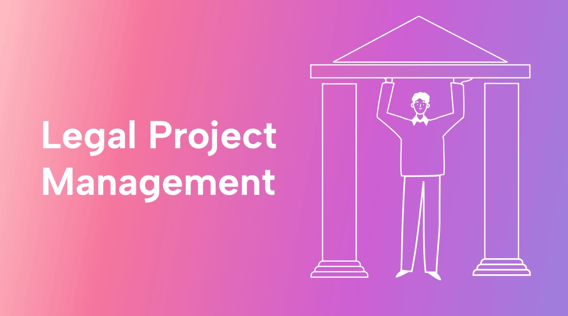If you are a small-scale legal firm partner or a project manager in the legal industry looking to switch up your industry, have you heard of legal project management yet?
Legal project management, or LPM, is an emerging specialty that’s been growing steadily over the last 15 years and continues to provide growing opportunities for project management. The benefits of legal project management can help launch your career to the next level as well as scale up your small firm. If you’ve been thinking about getting into this space but feeling overwhelmed, you’re in the right place.
While LPM is a specialty, all the project management principles you’ve already learned about or mastered will apply to this field. With a bit of consideration, you already have the skills and tools to set you on your way. Let us show you what we mean.
What is legal project management?
According to The National Law Review, legal project management (LPM), calls for the processes and delivery of legal services using a specific methodology. This client-focused specialty combines classic project management techniques with what you already do for managing legal matters.
 |
If you've mastered and applied the five phases of project management recognized by the Project Management Institute (and usually associated with a waterfall approach to managing projects), you're more than halfway there. With a few tweaks, they also apply to legal projects.
Benefits of LPM
When project managers put efficient and effective project management processes in place, legal professionals can focus on what they do best. Providing the framework for legal services is how LPMs can set the stage for increased efficiency and well-defined processes
Optimizing workflows and clarifying roles and responsibilities can help everyone stay engaged and productive. That can then lead to:
Improved customer satisfaction
If there's anything that leads directly to a healthier bottom line, it's customer satisfaction (and retention).
LPM helps you get there by providing comprehensive legal services that exceed customer expectations. By providing services like scoping, budgeting, and progress tracking into the usual workflows, clients have more transparency (and fewer surprises).
With detailed project planning, tracking, and reporting, you (and your customers) can avoid budget overages, risks, and time delays. The increased communication that comes with project management will also help keep everyone, including your customers, on the same page.
Over time, this leads to smoother processes and better outcomes for clients. And, as we know, greater customer satisfaction often paves the way for client loyalty.
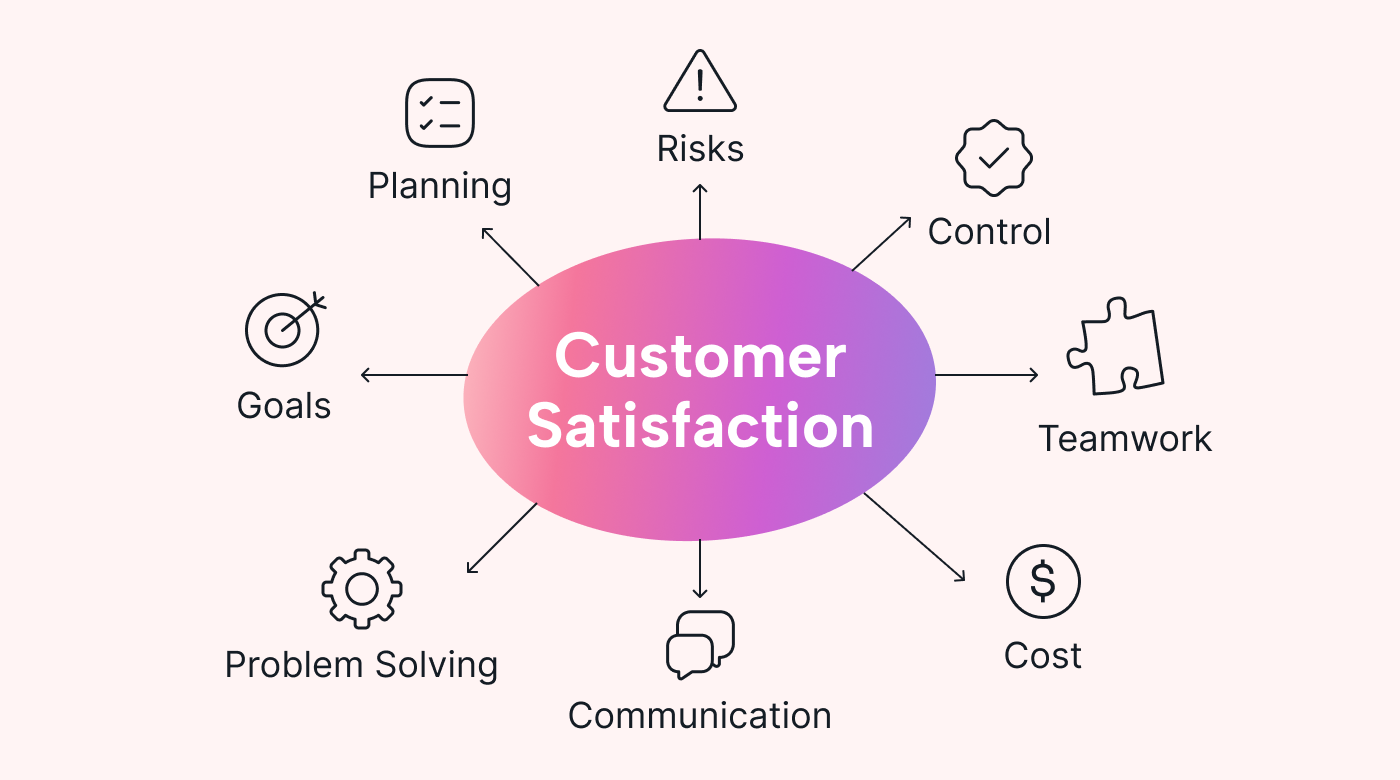 |
Optimize time (and money)
The Association of Corporate Counsel ran a study finding that companies that use legal project management save an average of 15% on legal costs.
With LPM, teams work more efficiently, and less time is spent reinventing the wheel. Project plans and schedules help everyone stay on track, and standard practices (and templates) can cut time and effort out of the workflows.
Budgeting is another front where standard project management can help. When you clearly understand the scope, time, resources needed, and the associated costs, you have better cost management.
Risk management
Legal projects tend to be large and complex, with many moving parts. Risk management is crucial to protecting against runaway costs and poor outcomes.
Like any other kind of project, scope creep is the number one risk, and the stakes are high in legal matters!
Examples of risks in legal project management include financial risks, information or security risks, and regulatory change risks. These risks might just be considerations but can lead to criminal charges in extreme situations in the legal world.
Risk management means identifying probable risks, developing a plan should they materialize, and keeping stakeholders (and customers) in the loop. Managing project risk effectively means fewer unpleasant surprises, better communication and information sharing, more decisions based on data, improved budget estimations, and overall better project results.
 |
Applying project management fundamentals to the legal world
The best part about legal project management is discovering that general project management fundamentals also apply to this highly specialized field. We’ll show you how to bring them into the legal industry.
Project management techniques
Let's start with the first of five (traditional) project management phases: initiation.
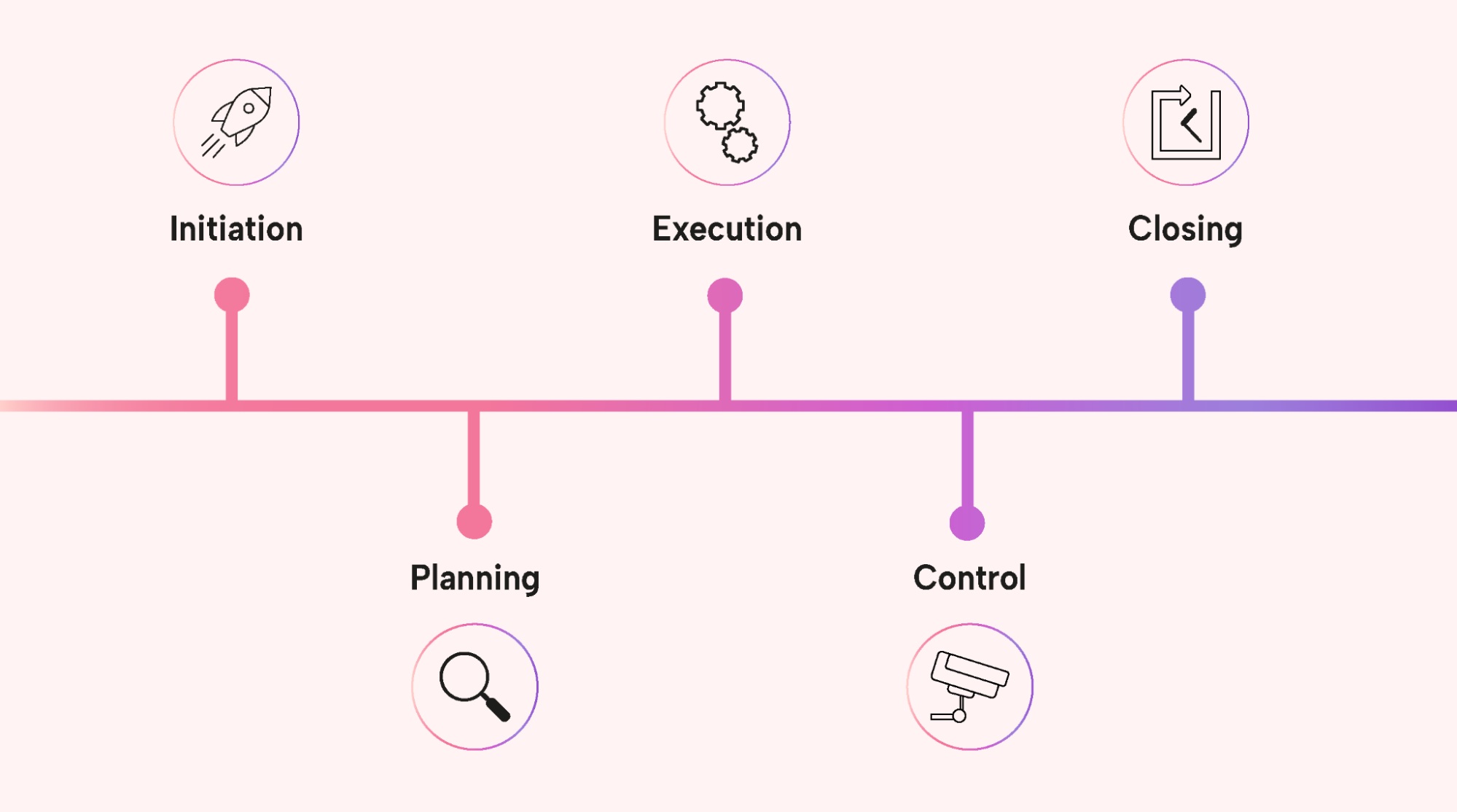 |
Let's start with the first of five (traditional) project management phases: initiation.
During the initiation phase of a legal project, the goal is to define the scope and establish the team responsible for carrying out the work. This might look like an initial consultation with the client to understand their needs. Do they need legal contract work? Or is there a dispute that might head to court?
Let's say your law firm is working on a messy, complex divorce case. During the initial consultation with your client, you learn about client expectations and outcome(s) they'd like.
In this case, your client's goals are to obtain full physical custody of the three children, remain in the (residential) home, and liquidate the vacation home (splitting the proceeds).
There you have your project goals. It's time to get your legal project management hat on and get to work.
Next, you'll define the project scope, including the deliverables, timeline, budget, and resources needed. Make sure to identify not only who'll be doing the work, but also who the key stakeholders are (and everyone's part, or roles, in the project).
The scope of the divorce case is not inconsequential. There are minor children and shared real estate assets on the line. Luckily your client has a healthy budget.
It's time to get to work on the next phase: planning. During this phase, you'll plan out the work and major milestones, fitting them into the timeline you've estimated. Make sure to mind task dependencies when planning.
For example, the divorce petition documentation must be filled out before being filed and served to the other party. You'll mark this down as the first piece of work and milestone in the project. You'll need to identify who on the legal team needs to sit with your client to ensure the petition is filled out correctly, as well as how the petition will be filed and then served.
After you've planned out the work and produced a project schedule with major milestones, it's time for you and the legal team to get to work, i.e., execution.
This is when your thorough planning gets set into motion. All work has been assigned to the right team members. The petition and other necessary forms are completed, filed with the court, and served appropriately to the other party.
All the other project activities and tasks are carried out as the case goes through the legal system, including gathering testimony and documentation of shared assets, mediation, and shared asset agreement proceedings.
While the team is doing the work, you'll want to track how that work is going (monitor) and deal with changes that inevitably come up (control).
In messy divorce cases, there are often setbacks like court appointment delays or incomplete documentation. Your job as a legal project manager is to monitor these risks and changes and provide accurate and timely status updates on each milestone in this case.
During the entire project lifecycle, it's crucial to regularly communicate with the client, team, and stakeholders to keep them updated (and manage their expectations). Effective communication techniques will serve you well here.
Closing the project involves reviewing if you and your entire team achieved its objective(s), how well the project went, and identifying areas for improvement. You might want to do this in a retrospective with everyone (internally) who was involved with the work. These valuable lessons learned can help you improve your future legal work.
Project management tools
Incorporate these tried-and-true project management tools into your LPM practice to help work stay on track.
Create a project plan that outlines the work, how you'll tackle the work, the schedule, milestones, and deliverables. Inputs might include a project charter, a statement of work (SOW), a work breakdown structure (which breaks down big chunks of work into small, manageable tasks), and a RACI Chart (which defines roles and responsibilities across the team).
Define who, how, and when you'll communicate with a communication plan. It should detail what information will be shared, with whom, the cadence, and how (e.g. a call, email, or a messaging app like Slack for quick comms).
Finally, it's prudent to have a risk management plan, especially in the legal domain. This is documentation to identify risks and develop a contingency plan if those risks come to fruition.
Start with an assessment matrix that ranks risks by potential impact and likelihood. Impact tells you how bad a risk could be for your law firm or client if it happens. It helps you understand the size of the potential damage. Likelihood is how you estimate the probability of a risk happening.
Best practices to help with legal project management
Proactive communication
As a project manager, communication is your bread and butter.
Ensure that all project stakeholders stay well-informed. Maintaining awareness (and expectations) of achievements, challenges, and changes is important. This level of transparency will help you avoid misunderstandings that can derail your project.
Regular check-ins, frequent updates, and consistent client status updates promote transparency and contribute to trust.
Use the communication plan to lay out exactly how and when you'll do these activities.
Risk mitigation
Risk management is how grown-ups manage projects (or so goes the adage).
Seasoned PMs know to get ahead of risks by having a plan B and C for each of the probable risks they've identified.
Your contingency plan includes which stakeholders and decision-makers can help you solve issues and what actions can be taken next. It's best to spend the most time and effort on risks that would be a disaster to the project.
Centralize information and documentation
Keeping information and documents organized and easily accessible is critical in law offices. It'll help you run more efficiently and securely.
Have a knowledge management plan in place and use technology to your advantage here.
Even better if you can collaborate on all that information within one app.
3 ways Motion supports your work practice
Motion’s project management app can help you be an effective legal project manager.
Track tasks and progress
Automatically prioritize and assign tasks with Motion's Task Manage.
The Task Manager can help allocate tasks based on an individual's capabilities, preferences, and availability. Even better, Motion can automatically create recurring tasks, saving you and the legal team valuable time.
Motion also helps with scheduling, so no one misses a court appearance or important interview. It has an intuitive Kanban board so everyone can see (and track) the work in progress. Transparency is built right in.
Automate your work
Motion's intelligent calendar will help you level up your scheduling process.
With Motion's automatic schedule-building functionality and project templates, you don't have to reinvent the wheel when setting up a new project. It'll analyze and organize your team's work and availability to create an optimized schedule for every team member.
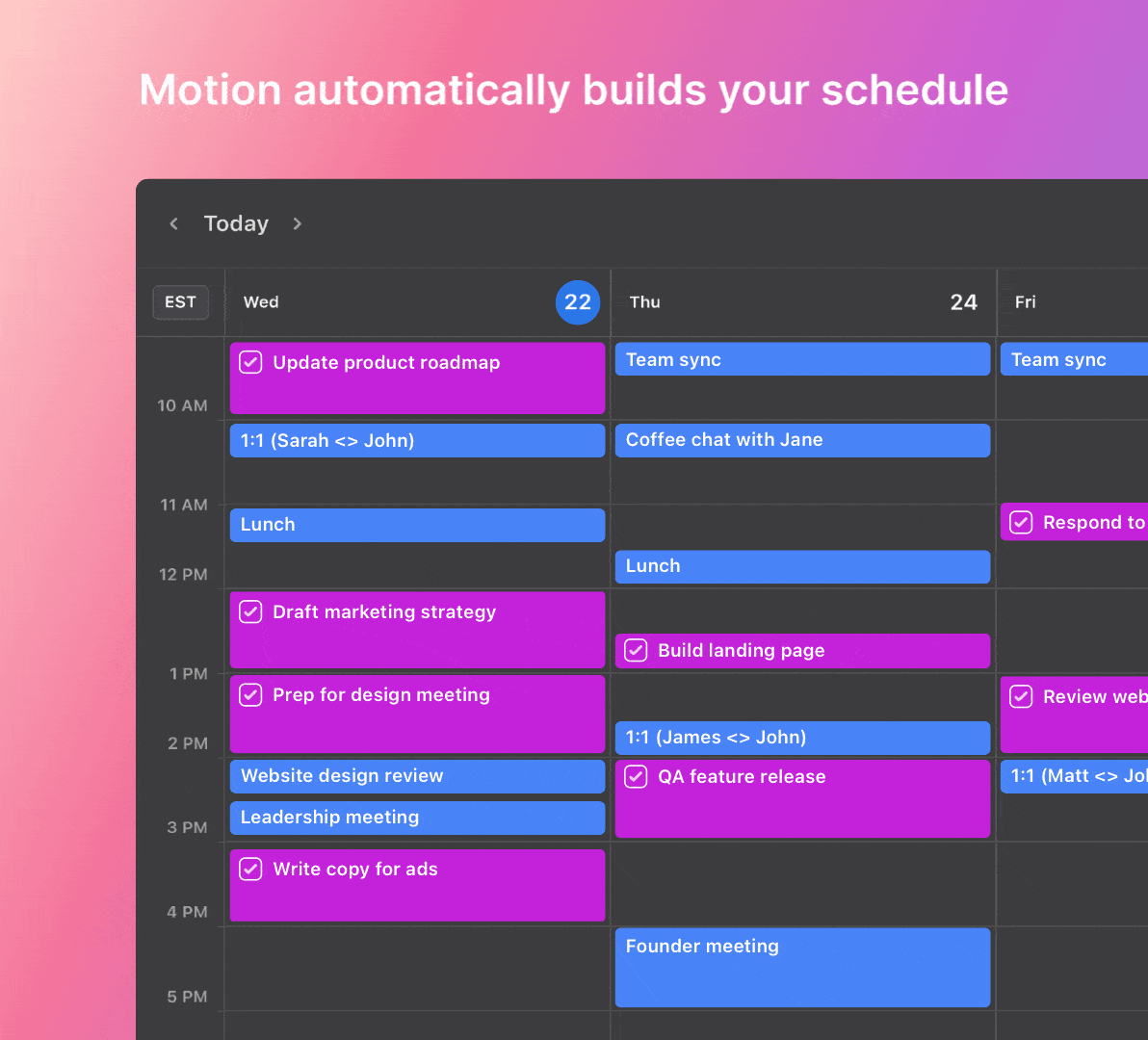 |
Centralized documentation
Keep your information, notes, and communication in one place with Motion.
Having a centralized location to store notes and files makes it easier to find them when the team needs them.
You and your stakeholders can also quickly collaborate on projects within the app with the ability to add comments and comment threads, reducing or cutting out the time-suck of app-hopping. Gathering feedback, asking questions, and keeping communication going all in one place is a cinch with Motion.
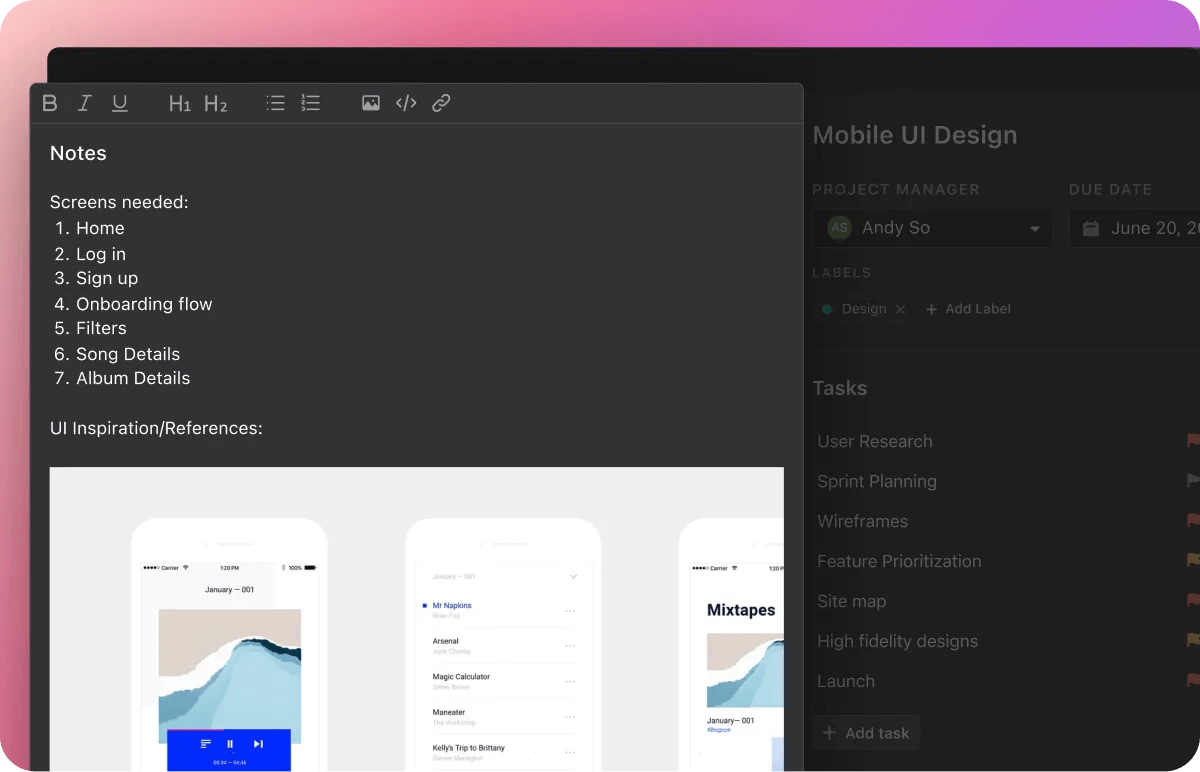 |
Use Motion for your legal project management
Don't get overwhelmed if you're ready to dive into legal project management. With the right tool, your legal project management game will be faultless.
Leverage Motion's AI and smart technology to automatically prioritize changing priorities as legal matters evolve. Once you've added your tasks and milestones, if you're in danger of missing a deadline to file important forms for the court, Motion will send an alert to help keep you on track.
Let Motion delegate who's responsible for completing tasks so you can focus on more important work.
Try Motion today and easily manage legal projects while freeing up the rest of your legal department to do what they do best, in the boardroom or the courtroom. Use Motion for 7 days for free now.

Liz is a graphic designer turned content marketer specializing in SaaS, project management, and brand marketing. Besides her passion for writing, Liz cares for her animals on a smallholding in rural Cumbria.
